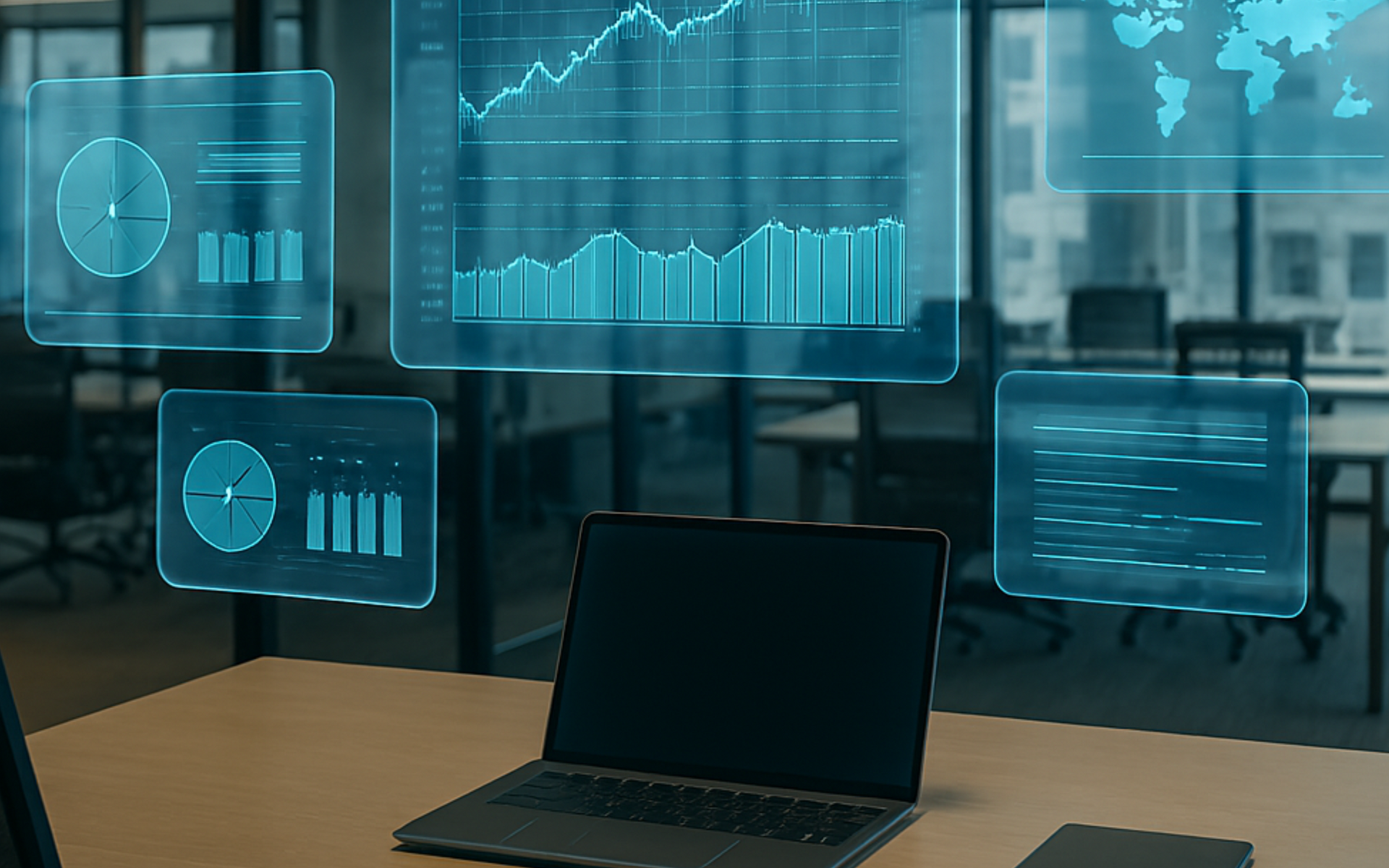Business Continuity vs Disaster Recovery: Key Differences, Strategies and Common Pitfalls
Introduction
With rising ransomware attacks, data breaches and system failures, organisations face greater risk to their operations. From financial losses to reputational damage and regulatory fines, the fallout of unpreparedness is severe. This blog is tailored for IT professionals, small to medium enterprises, business leaders and cybersecurity learners who want a clear understanding of how to protect their digital and operational integrity.
Business continuity and disaster recovery are two strategies designed to keep a business functioning during and after a disruption. While often used interchangeably, they serve different purposes and require unique planning. Let’s explore what sets them apart and how to implement each one effectively.
What Is Business Continuity Planning (BCP)?
Business continuity planning is a strategic approach that ensures an organisation can maintain essential functions during and after a disruption. Rather than focusing purely on IT systems, BCP includes people, processes, facilities and communication.
A helpful way to think of BCP is to imagine a restaurant facing a sudden power outage. A strong business continuity plan would involve having a backup generator, a list of emergency suppliers and a clear protocol for staff. The aim is to continue serving customers with minimal disruption.
In practice, BCP includes business impact analysis, risk assessments, continuity strategies, communication plans and periodic testing. It addresses scenarios ranging from natural disasters to pandemics and supply chain interruptions.
In today’s digital world, BCP is vital. Remote work, global operations and heightened customer expectations demand seamless service. Regulatory bodies also require BCP as part of compliance, making it a legal necessity in many sectors.
What Is Disaster Recovery (DR)?
Disaster recovery focuses on restoring IT systems and data after a major incident. It’s a subset of business continuity but deals specifically with technological resilience. Where BCP ensures the business keeps running, DR ensures the technology enabling it is recoverable.
Think of disaster recovery like an IT department's fire drill. It includes data backups, alternate data centres, system replication and recovery tools. If a cyberattack compromises your primary data server, DR plans would dictate how to switch to a backup server, restore data and resume normal operations.
Effective DR planning involves identifying critical systems, setting recovery time objectives (RTO) and recovery point objectives (RPO), and testing those scenarios in simulations.
Disaster recovery is essential in a landscape where digital infrastructure underpins nearly every business function. From e-commerce platforms to cloud applications and internal databases, the ability to recover quickly from a disruption defines resilience.
Key Differences and When You Need Both
Though closely linked, business continuity and disaster recovery serve distinct purposes. BCP is broader, encompassing all business operations, while DR is narrower and technology-specific.
For example, a business continuity plan might include instructions for customer service teams to operate from home, while a disaster recovery plan would focus on restoring the VoIP system they use to make calls.
Every organisation needs both. Business continuity ensures you can operate, and disaster recovery ensures you can recover. Together, they form a comprehensive resilience strategy.
| Feature | Business Continuity (BCP) | Disaster Recovery (DR) |
|---|---|---|
| Focus | Business operations | IT infrastructure and systems |
| Goal | Maintain essential functions | Restore systems and data |
| Scope | Organisation-wide | Primarily IT |
| Example | Alternate work locations | Data centre backups |
| Timeframe | During and after disruption | After disruption |
| Key Metrics | Business impact, process continuity | RTO, RPO |
How Cyber Attacks Disrupt Both
Cyber attacks such as ransomware have the capacity to paralyse both business continuity and disaster recovery efforts. In a ransomware event, systems can be locked, data encrypted and operations halted. If BCP is not designed to function without those systems, the business stops. If DR does not include secure, isolated backups, data may be lost.
Consider the 2017 WannaCry attack that affected the NHS. Systems across multiple hospitals were shut down. Appointments were cancelled. Emergency departments were diverted. A robust BCP could have ensured essential services continued through manual processes, while an effective DR strategy could have enabled faster system recovery.
Cyber insurance can help, but policies vary in coverage and response time. Organisations must understand what is included, how claims are processed and whether their current plans align with insurer expectations.
Cybergen recommends regular tabletop exercises, ransomware simulations and off-site backups as part of a dual BCP and DR strategy.
Building a Resilient Plan
Developing a strong BCP and DR plan requires commitment, planning and resources. The first step is conducting a business impact analysis. This helps identify which functions are critical and what would happen if they were disrupted. From there, organisations can define continuity and recovery strategies.
Cybergen provides downloadable templates to guide this process. These include fields for roles, recovery procedures and communication plans. They also help teams visualise dependencies, assess third-party risks and validate assumptions.
Key performance metrics such as Recovery Time Objective (RTO) and Recovery Point Objective (RPO) help organisations define acceptable levels of downtime and data loss. RTO is the maximum tolerable time a system can be down. RPO is the maximum tolerable amount of data loss measured in time.
A resilient plan is one that is tested. Cybergen recommends scheduled simulations, role-playing scenarios and automated testing tools to ensure readiness.
Common Mistakes and Oversights
Many organisations treat BCP and DR as one-off projects rather than living documents. Plans become outdated. Staff change roles. Systems evolve. If not maintained, a plan that worked last year might be useless today.
A common mistake is relying solely on data backups without testing them. Corrupted or incomplete backups are of no use in a real incident. Similarly, assuming cloud providers will handle recovery can be risky without a clear shared responsibility model.
Another oversight is not involving all departments. Business continuity is not just an IT issue. Finance, HR, operations and customer service all need roles within the plan.
Finally, poor documentation and lack of training often delay recovery. When an incident occurs, there should be no confusion. Each team member must know their role and how to execute it.
What Really Matters
BCP and DR are essential components of a modern resilience strategy. They serve different functions but work best together. A well-designed business continuity plan keeps operations running. An effective disaster recovery plan ensures data and systems are restored quickly. With increasing cyber threats, regulatory pressures and customer expectations, having both is no longer optional.
Organisations must view these as long-term commitments. Plans should be tested, updated and championed at every level of the business.
Cybergen offers expert guidance, templates, simulation services and support to help businesses navigate these challenges. Whether you are starting from scratch or enhancing an existing plan, we provide the tools and expertise needed to build resilience.
Summary
In a world where disruption is a matter of when, not if, business continuity and disaster recovery can no longer be side projects. These are essential, foundational elements of any secure business strategy.
The cost of being unprepared is too high. Downtime, data loss and reputational harm can set back a business for months or years. Cybergen empowers organisations to face these challenges head-on, offering the resources and expertise to develop robust, tested and effective plans.
Take the next step with Cybergen. Strengthen your resilience, protect your data and prepare your team for whatever comes next.
Ready to strengthen your security posture? Contact us today for more information on protecting your business.
Let's get protecting your business
Thank you for contacting us.
We will get back to you as soon as possible.
By submitting this form, you acknowledge that the information you provide will be processed in accordance with our Privacy Policy.
Please try again later.








